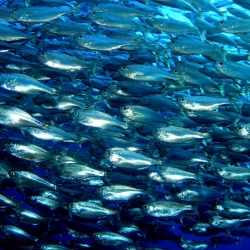
The slow creep of sea level rise is putting more and more of these people and assets at risk. Since the start of the 20th century, sea levels have risen roughly 8 inches. That number is also expected to increase into the next century as ocean waters warm and expand and more water is added from melting glaciers.
A new study in the Proceedings of the National Academy of Sciences on Monday projects sea levels could rise from 9 to 48 inches by 2100. The wide range of uncertainty is due to the Antarctic and Greenland ice sheets, which appear fairly stable but if they were to start melting, could contribute as much as 25 inches to sea level rise.
The study projects that even with conservative economic and population growth, $17 trillion in coastal assets could be sitting below the 100-year flood level by 2100. In a wealthier, more populous world, that number would balloon to $210 trillion.
While these factors have been considered individually in previous studies, this is the first time sea levels, including contributions for the Greenland and Antarctic ice sheets, have been modeled in relation to both population growth and coastal development over the course of the 21st century. The results show that unless something is done, coastal flood could cause catastrophic losses every year.
